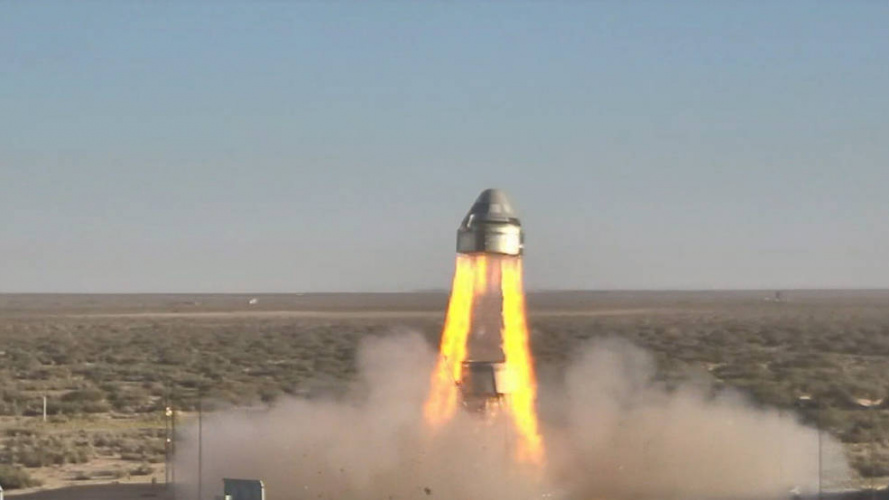
One of the main planks of the US's attempt to restore crewed spaceflight launch capability has hit a small snag, with the failure of one system in a test of the launchpad abort capability of Boeing’s CST-100 Starliner capsule. Although the test spacecraft lifted off successfully from its launchpad, one of its three parachutes did not deploy to bring the capsule to a landing.
Boeing and NASA count the test as a success, as two parachutes are sufficient for a landing in which all of the crew would survive. Launchpad aborts, although rare, do occur and many systems have to work in an integrated fashion. In the test, carried out on 4 November at White Sands Missile Range in New Mexico, the only failure was the single parachute deployment.
_______________________________________________________________________
Further reading
- Video of the week: Suiting up with Boeing
- Up in the air: A week in aerospace
- SpaceX Crew Dragon splashdown moves US space launches step closer
_______________________________________________________________________
In an abort situation, the capsule, with its service module attached, must be able to launch itself from the top of the Atlas 5 launcher which would normally be used on Starliner missions, using thrusters integrated into the capsule itself. It would then fire orbital manoeuvring and attitude control (OMAC) thrusters to move it to a safe distance from the launchpad, jettison the service module, deploy parachutes and float down to a safe landing.
In this week’s test, Starliner fired its four launch abort engines and OMAC thrusters, pushing up and away from the test stand and flying nearly a mile in just under 20 seconds. Thirty-four seconds after launch, the crew and service module separated, and parachutes were deployed; 30 seconds later the capsule’s heat shield separated from the spacecraft, allowing airbags to inflate in preparation for landing. The capsule touched down 95 seconds after launching.
“We’ve tested all these systems individually, so we know the propulsion system fires at the intended levels, and we know the parachutes can support the vehicle and safely slow it down, but the real test is making sure those systems can perform together. That’s when you know these systems are ready to fly people,” said Boeing’s Pad Abort Test Flight Director Alicia Evans.
During a broadcast of the test, NASA spokesman Dan Huot said “We saw two out of three parachutes, and that is a stable condition.” In the agency’s statement on the test, it noted: “Although designed with three parachutes, two opening successfully is acceptable for the test parameters and crew safety.”
The next test of Starliner, which is designed to carry up to seven astronauts to the International Space Station, will be on 17 December, when and uncrewed capsule will fly to the ISS. If successful, the first flight with a crew could take place as early as the first quarter of 2020.




Nanogenerator consumes CO2 to generate electricity
Whoopee, they've solved how to keep a light on but not a lot else.